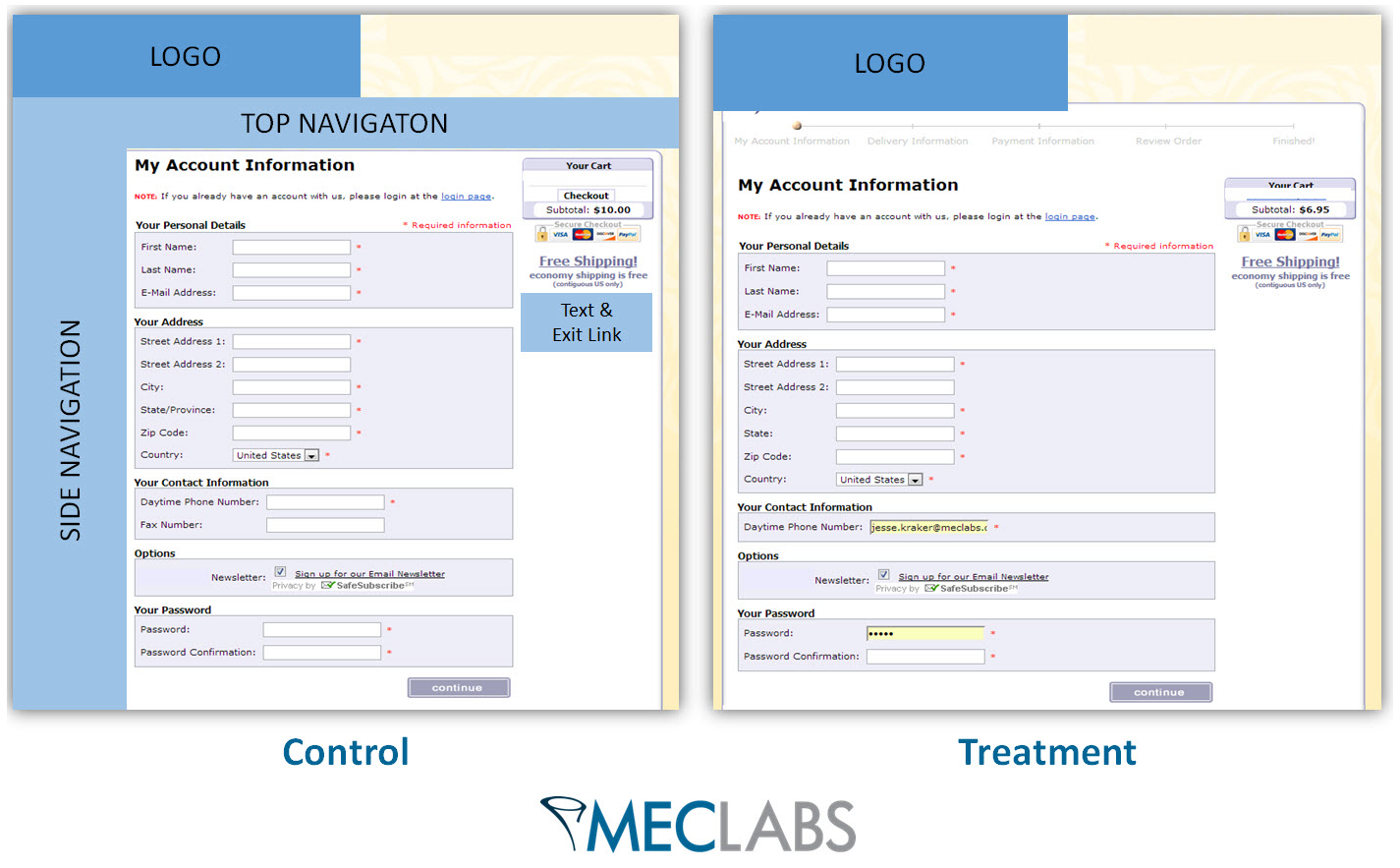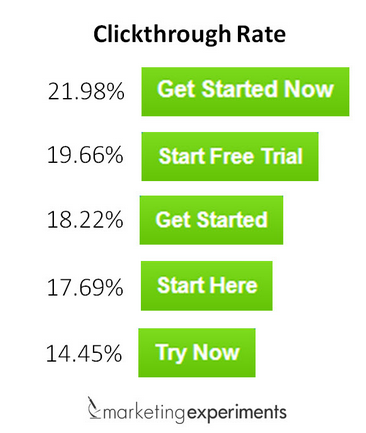What is on the mind of marketers today?
This year, we shared a multitude of discoveries achieved in the MarketingExperiments research lab. We learned about hot topics in marketing today including responsive design, the effectiveness of green marketing and how to improve a Web form without significantly reducing the number of fields.
In the MarketingExperiments Blog, we covered a wide range of topics on website optimization, testing strategies and real-world tests straight from the lab.
To help aid your efforts going into 2015, read on for the most shared posts this year, indicated through retweets and shares by you, the reader.
Top Post of 2014 — Less is More: Maximize conversion by removing website distractions
Early in 2014, we heard from a MECLABS Senior Research Manager for his take on a simple and powerful strategy for Web optimization: Less is more.
In a test within the checkout pages for an online retailer, the MECLABS research team identified a number of elements causing friction and distracting customers from completing their purchase.
In the control of the checkout, the page included both side and top navigation, unnecessary text as well as exit points, which all served as distractions from the key goal of the page: conversion.
In the treatment, the team removed the navigation and other exit points from the page as well as the distracting and unneeded text. The result? A 10% increase in checkout completion, equaling to a 20% increase in revenue per visit to the checkout process.
According to Jesse Kraker, Senior Research Manager, MECLABS, “When optimizing your website, you should evaluate each page element and consider whether it is helping the goal of your site or distracting visitors. Any potentially distracting element is an opportunity to test how your pages perform with those elements removed.”
Top Research Category in 2014 – CTA testing and optimization
In 2014, many of the top posts chosen by you center around call-to-action (CTA) optimization, which is a page element directly impacting conversion. Easy to test and track, effective CTAs can make or break revenue and conversion goals in emails and landing pages.
CTAs should be an act of customer service
CTAs, we learned, should be helpful tools to your customers, according to Paul Cheney, Senior Partnership Content Manager, MECLABS.
In this post, he shared five CTAs that dramatically increased page performance and lessons from these tests that you can apply to your own CTAs.
“Effective calls-to-action are effective because a marketer somewhere put some creative thinking into solving the problem of how to best serve a set of customers,” Paul explained.
Don’t guess — Test your CTAs
How much does your CTA copy matter? Enough to decrease clickthrough rate by 26%, according to one test from our lab.
In this post, Daniel Burstein, Director of Editorial Content, MECLABS, shared this test from a MECLABS Research Partner selling premium software to businesses. This test was located in a banner on the top of a webpage, encouraging prospects to start a free trial.
“Try Now” resulted in the lowest clickthrough rates when compared to the other button variations. But why?
Like with any complex B2B sales cycle, there is some inherent anxiety around a free trial offer. There is a cost (time) to trying the software and an expectation of the free trial. “Try Now” may have asked too much, too soon in the offer, whereas allowing the prospect to get started alleviated some of that anxiety. You can read more on this analysis from another top post this year from Jon Powell, Senior Executive Research and Development Manager, MECLABS.
“Subtle changes in words can make a significant difference in performance. By split testing, you can discover the words that will work best for your unique audience and your unique products,” Daniel said.
5 Traits the Best Calls-to-action All Share in Common
What is it that actually makes a CTA effective?
John Tackett, Partnership Content Manager, MECLABS, dug into the research to discover the most common traits effective CTAs have so that you can apply these trends to your own testing efforts.
In this post, John explained the five common traits of successful CTAs are:
- Alignment
- Timing
- Absorption
- Negation
- Redundancy
“The CTA is not limited to just a button or copy; it encompasses every element on a page that transfers customer conversation into customer action,” John said.
Read his post for more on the top five traits as well as real-world examples supporting each trait.
Bonus Material: 404 page optimization and email copywriting strategies
Learning doesn’t end with website and CTA optimization. Read on for two additional posts that ranked highly in shares for insights and ideas to elevate your marketing efforts for 2015.
404 pages – not just a dead end
How many times have you landed on a website page that resulted in a “404 page not found” error and had to backtrack to a page that worked?
404 pages are a blank slate for creative and humorous content, but do your 404 pages offer value to lost visitors?
This year, Selena Blue, Partnership Content Manager, MECLABS, assembled a 404 page collection, displaying pages that help visitors find what they are looking for as well as page designs marketers should learn to avoid.
Selena laid out six tips to deliver a useful experience through your 404 pages:
- Establish where visitors have landed
- Keep in line with company and site branding
- Ensure your error messaging is clear
- Provide steps to help the user find the correct page
- Present valuable alternative content
- Offer a way for the user to report the error
Great for #UX! RT @unbounce: A 404 page doesn’t have to be a dead end: http://t.co/8s9MONtuOr via @mktgexperiments
— ThinkSEM (@ThinkSEM) September 30, 2014
Email copywriting – 6 key objectives
The goal of many email marketing messages is to earn that click back to a landing page or website. In this post, Daniel Burstein shared a key part of one session in the Email Messaging Online Course to aid marketers in thinking like their customers and develop emails that convert. Email copy must achieve six objectives to turn customer interest into conversion:
The first objective a marketer must accomplish is to arrest attention in that email subscriber. “By stopping them and grabbing their attention, you’re buying a few moments of their time to make a case for your conversion goal,” Daniel said.
RT @MktgExperiments Email Marketing: Does your copywriting accomplish these 6 key objectives? http://t.co/3m7ULRNayn
— Michael Aagaard (@ContentVerve) September 2, 2014
Marketers can do this by creating striking visuals and compelling headlines and copy.
Interested in hearing more about the other five email copywriting objectives? Check out the post in its entirety and register for the Email Messaging Online Course, which dives deeper into this topic as well as other elements of an effective email strategy.
You might also like
Sign up for the MarketingExperiments Journal to receive all updates of our research
Receive MarketingExperiments Blog posts straight to your inbox to stay up-to-date on discoveries









